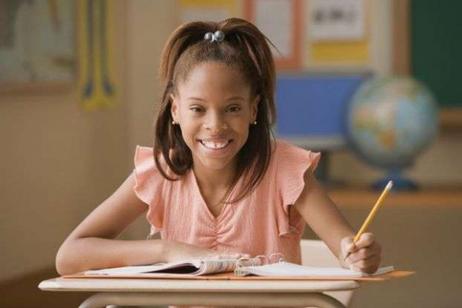This thought-provoking article delves into the complex world of controversial books on high school reading lists. Literature has long been a powerful tool for sparking discussions, challenging societal norms, and broadening perspectives. However, with the inclusion of contentious books in educational curricula comes a range of opinions and considerations that educators, parents, and students must grapple with.
Uncover the pros of introducing controversial literature to high school reading lists as we highlight how these books can stimulate critical thinking, foster empathy, and encourage open dialogue about sensitive issues. Analyze how exposure to diverse and challenging ideas can enrich students' intellectual growth, helping them develop a deeper understanding of complex themes.
Conversely, we will also explore the cons and concerns associated with controversial books in high school education. Investigate how some parents and educators may worry about age-appropriateness, potential discomfort, or conflict with personal values. Delve into the arguments for providing alternative viewpoints and ensuring that students have a well-rounded reading experience addressing various perspectives.
We shed light on the practical challenges and ethical considerations in selecting and teaching controversial books through interviews with educators, students, and literary experts. How do educators strike a balance between promoting critical thinking and respecting individual sensitivities? How can parents and school boards navigate the delicate line between intellectual freedom and age-appropriate content?
Join us as we engage in an insightful and nuanced examination of the benefits and drawbacks of including controversial books in high school reading lists. Gain a deeper appreciation for the role of literature in shaping young minds, fostering empathy, and encouraging open-mindedness while recognizing the need for sensitivity and careful consideration when addressing challenging themes in the educational setting.
As high schools analyze thousands of books to choose the most compelling and engaging titles for young teen readers, many parents often feel that the chosen books are inappropriate for their kids. According to Pearson Prentice Hall, an Advanced Placement educational network, some of the most highly recommended high school books include popular and classic titles such as:
- Achebe, Chinua. Things Fall Apart.
- Alvarez, Julia. How The Garcia Girls Lost Their Accents.
- Anderson, Sherwood. Winesburg, Ohio.
- Angelou, Maya. I Know Why the Caged Bird Sings.
- Arnett, Peter. Live from the Battlefield: From Vietnam to Bagdad.
- Faulkner, William. As I Lay Dying.
- Faulkner, William. The Sound and the Fury.
- Fitzgerald, F. Scott. The Great Gatsby.
- Frank, Anne. Anne Frank: The Diary of a Young Girl.
- Golding, William. Lord of the Flies.
- Remarque, Erich Maria. All Quiet on the Western Front.
- Salinger, J.D. The Catcher in the Rye.
- Shakespeare, William. Hamlet.
- Sinclair, Upton. The Jungle.
- Sophocles. Oedipus Rex.
- Steinbeck, John. The Grapes of Wrath.
- Steinbeck, John. Of Mice and Men
- Wharton, Edith. Ethan Frome.
- Wright, Richard. Black Boy.
- Wright, Richard. Native Son.
While these, among hundreds to thousands of other books, are commonly read in public schools across the country, many parents express concern over the content and topics of these required texts. For example, SteinbeckŌĆÖs classic novel Of Mice and Men raises issues of euthanasia, murder, and justice as some of the core questions of the text. Adding to this, SalingerŌĆÖs ever-popular Catcher in the Rye has been one of the most commonly banned books among public schools in the nation, specifically for its sexual content, language, and discussions of religion, death, suicide, and peer pressure. As many of these required texts raise such complex, convoluted, and controversial issues, parents are often surprised and occasionally angered by a schoolŌĆÖs approval of divisive books.
The Raging Debate Surrounding Controversial Books
As Rose Ann Pearce from The Morning News reports, a local North Carolina high school, Fayetteville, held a meeting to discuss and debate 50 required texts currently being taught and read in classrooms. The school leaders and parents arranged the meeting to evaluate whether or not the 50 books were too explicit and sexually charged for young readers to pore without parental approval. According to Pearce, some of the parents contested the books because they felt the reading was ŌĆ£pornographic and vile.ŌĆØ In contrast, teachers and students tried to explain their desire to offer up controversial books, topics, and issues. As one high school senior stated, ŌĆ£Books are the epitome of life,ŌĆÖŌĆØ the senior asserted that the protested books should remain in libraries and classrooms. A fellow senior student offered more support in arguing that taking these books off shelves would be ŌĆ£ŌĆśDepriving students of an education about the world around themŌĆÖŌĆØ while adding that it is ŌĆ£ŌĆśhateful and intolerant to portray these books as pornographic.ŌĆÖŌĆØ
In addition to the protests about the sexual content of many of the contested books, the Forbidden Library, a site dedicated to posting the explanations behind banning books in public schools, reveals hundreds of other books that have been banned in public schools for various reasons. For example, the popular historical non-fiction text Anne Frank: The Diary of a Young Girl was outlawed in Alabama schools due to ŌĆ£sexually offensiveŌĆØ passages. Adding to this, as the site reveals, ŌĆ£Four members of the Alabama State Textbook Committee (1983) called for the rejection of this book because it is a ŌĆśreal downer.ŌĆÖŌĆØ Among other banned books and authors is Alice WalkerŌĆÖs The Color Purple, where parents and school leaders in Jackson County, West Virginia, banned the Pulitzer Prize-winning novel due to its sexually and socially explicit nature, in addition to the bookŌĆÖs ŌĆ£Troubling ideas about race relations, man's relationship to God, African history, and human sexuality.ŌĆØ While this banning occurred in 1992, it was finally returned to public school shelves after nine months of rigorous debate.
Can Controversial Books Foster Important Learning for Teens?
In offering an explanation for the support of the controversial texts, Pearce reveals one school leaderŌĆÖs fervent protest, stating, ŌĆ£ŌĆśAll of us are here for what's best for the youth in our community.ŌĆØ By offering up controversial topics and themes in various engaging texts, schools and teachers can give students ŌĆ£materials that help answer their questions.ŌĆØ Many teachers reveal that books are not intended to be read without guidance. The themes and controversies of many questioned texts are used to foster dialogue and discussion in the classroom. By exposing students to a myriad of confusing and troubling topics, teachers are guiding students into the reality of the complex adult and social world. Each text is chosen for a specific grade and age group; the books serve as a scaffold to slowly guide students to build upon more complicated ideas and realities.
Ultimately, while parents of teens possess the right to question books and texts that are being taught in their son or daughterŌĆÖs classrooms, many school leaders and teachers want to remind parents that, regardless of the bookŌĆÖs topics, themes, and context, teachers carefully plan and explore issues with teen readers cautiously. The attempt to expose students to challenging topics and issues, as many teachers support, is not intended to force students into a certain mode of thought; moreover, the books are to serve as opportunities for students to think, theorize, question, and explore.
Questions? Contact us on Facebook. @publicschoolreview












